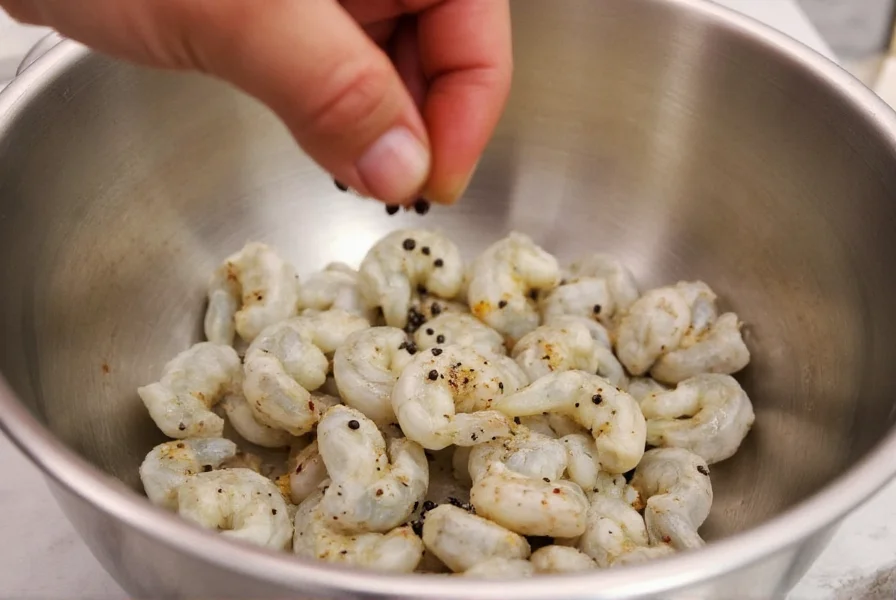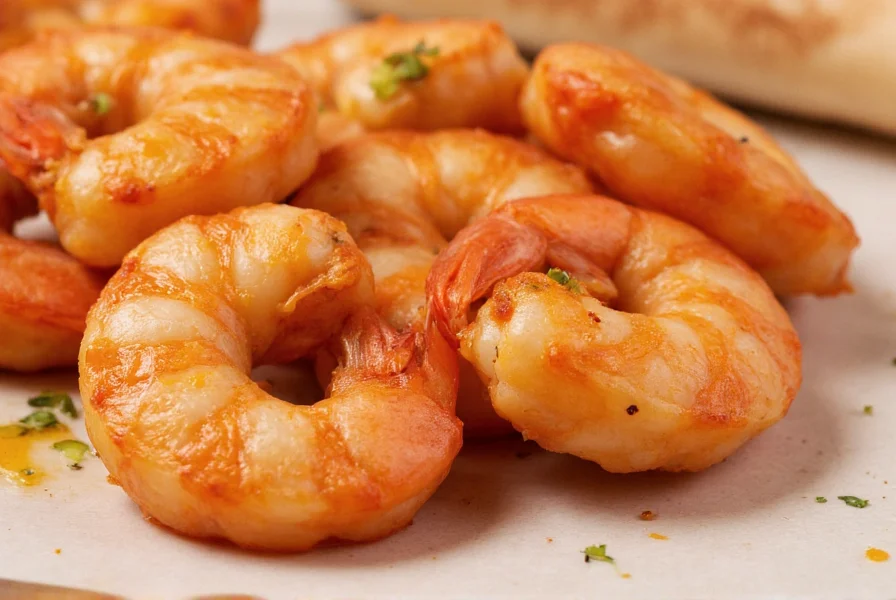When preparing authentic pepper shrimp, the quality of both your seafood and pepper makes a significant difference in the final dish. Fresh, properly cleaned shrimp combined with freshly cracked black peppercorns creates a flavor profile that pre-ground pepper simply cannot match. The cooking technique—whether stir-frying, sautéing, or grilling—also dramatically affects texture and taste.
The Essential Components of Perfect Pepper Shrimp
Creating exceptional pepper shrimp requires attention to three critical elements: ingredient quality, pepper selection, and cooking precision. Many home cooks make the mistake of using pre-cooked shrimp or pre-ground pepper, which results in rubbery texture and flat flavor.
For optimal results, start with fresh, raw shrimp (21-25 count per pound works well) that have been properly deveined. The pepper component deserves special consideration—while standard black peppercorns work, many chefs prefer a blend of Tellicherry peppercorns for their complex flavor notes. Some regional variations incorporate Sichuan peppercorns for that distinctive tingling sensation.

Step-by-Step Preparation Guide
Follow this professional technique for restaurant-quality pepper shrimp at home:
- Prep your shrimp: Pat 1½ pounds of raw shrimp completely dry with paper towels—moisture is the enemy of proper searing
- Create the pepper blend: Combine 2 tablespoons freshly cracked black pepper, 1 teaspoon garlic powder, ½ teaspoon onion powder, and ¼ teaspoon cayenne (optional for heat)
- Season: Toss shrimp with 1 tablespoon olive oil, then coat evenly with pepper mixture
- Cook: Heat 2 tablespoons oil in cast-iron skillet over high heat until smoking hot, then add shrimp in single layer
- Sear: Cook 90 seconds per side without moving—shrimp should develop a light crust
- Finish: Add 2 minced garlic cloves and 1 tablespoon butter, tossing to coat for 30 seconds
Regional Variations Worth Exploring
Pepper shrimp preparation varies significantly across culinary traditions. Understanding these differences helps you select the style that matches your taste preferences:
| Cuisine Style | Key Characteristics | Best Serving Method |
|---|---|---|
| Sichuan Chinese | Dry-fried with Sichuan peppercorns, chili peppers, and garlic | Over steamed rice with cucumber slices |
| Cajun/Creole | Blackened with cayenne-heavy seasoning, often served with remoulade | As an appetizer with lemon wedges |
| Mediterranean | Grilled with lemon-infused olive oil and coarsely ground Tellicherry pepper | With crusty bread and roasted vegetables |
Avoiding Common Pepper Shrimp Mistakes
Even experienced cooks encounter issues with pepper shrimp preparation. Here's how to solve frequent problems:
- Rubbery texture: Caused by overcooking or using previously frozen shrimp that weren't properly thawed. Cook shrimp just until they turn opaque (about 2-3 minutes total)
- Bitter pepper flavor: Results from burning the pepper. Add pepper later in the cooking process or use medium-high rather than high heat
- Uneven seasoning: Toss shrimp with oil before adding dry seasonings to help spices adhere properly
- Soggy appearance: Failure to dry shrimp thoroughly before cooking. Always pat shrimp completely dry with paper towels

Nutritional Benefits of Pepper Shrimp
This dish offers notable nutritional advantages when prepared properly. A 4-ounce serving of pepper shrimp contains approximately:
- 120 calories
- 24g high-quality protein
- 1.5g healthy fats
- Significant amounts of selenium, vitamin B12, and iodine
- Negligible carbohydrates
The black pepper component provides additional benefits—piperine, the active compound in black pepper, enhances nutrient absorption and has anti-inflammatory properties. When combined with shrimp's high protein content, this creates a meal that supports muscle maintenance while being relatively low in calories.
Perfect Pairings for Pepper Shrimp
Certain accompaniments elevate pepper shrimp from a simple dish to a complete dining experience:
- For Sichuan-style: Steamed jasmine rice and blanched Chinese broccoli
- For Cajun preparations: Creamy grits and grilled asparagus
- For Mediterranean versions: Lemon-herb quinoa and roasted bell peppers
- Wine pairing: Crisp white wines like Sauvignon Blanc or unoaked Chardonnay complement the pepper notes without overwhelming the delicate shrimp flavor
Frequently Asked Questions
What's the difference between black pepper shrimp and Sichuan pepper shrimp?
Black pepper shrimp typically uses standard black peppercorns as the primary seasoning, creating a straightforward spicy warmth. Sichuan pepper shrimp incorporates Sichuan peppercorns which produce a unique tingling sensation (ma la) along with heat from chili peppers, characteristic of Chinese Sichuan cuisine.
Can I use frozen shrimp for pepper shrimp recipes?
Yes, but with precautions. Thaw frozen shrimp overnight in the refrigerator, then spread on paper towels to remove excess moisture. Never use shrimp that's been previously cooked, as this will result in rubbery texture when you prepare your pepper shrimp dish.
How can I prevent my pepper from burning during cooking?
Add the pepper later in the cooking process—either toss it with the shrimp just before cooking or add it to the pan about 30 seconds before finishing. Using medium-high rather than high heat also prevents burning while still achieving proper sear on the shrimp.
What's the ideal shrimp size for pepper shrimp dishes?
21-25 count per pound (medium-large) works best for pepper shrimp preparations. This size provides enough surface area for the pepper seasoning to adhere while cooking quickly enough to prevent overcooking. Avoid extra-jumbo shrimp as they require precise timing to cook through without becoming tough.
How long should I marinate shrimp for pepper shrimp recipes?
For pepper shrimp, minimal marinating time is best—15-20 minutes maximum. Shrimp are delicate and prolonged exposure to acidic ingredients can start to 'cook' them (ceviche-style), resulting in undesirable texture. The pepper and other dry seasonings adhere well without extended marinating time.











 浙公网安备
33010002000092号
浙公网安备
33010002000092号 浙B2-20120091-4
浙B2-20120091-4